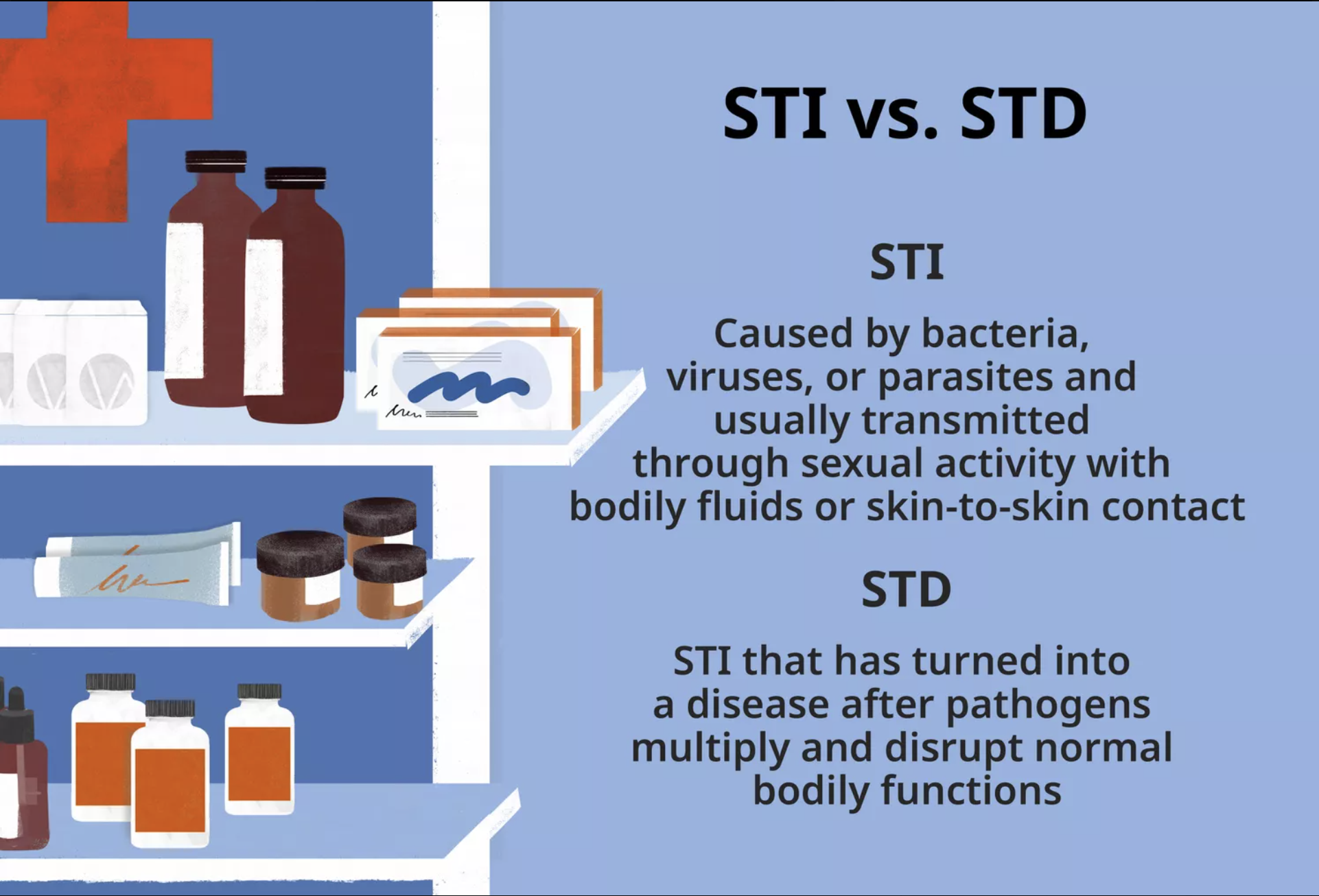Sexually Transmitted Infections: They probably aren’t as scary as you think
“Don't have sex, because you will get pregnant and die,” sound familiar? Yes, that is a quote from Mean Girls, but it’s also a common theme among American sex education, and what you may have heard when talking to your parents about sex. Making the joke from the film painfully accurate. With this mentality and knowledge shared around sexually transmitted infections (STI), and other sex topics, it is no wonder that fear is at the forefront of our minds when it comes to sex.
If you are someone who hears someone say something about STIs and it produces a knee-jerk reaction of disgust or fear, you are definitely not alone! It’s more than likely it’s what you were taught. Lack of information and misinformation about STIs has led to a lot of misunderstandings and stigma around the subject. My hope is that this blog will eliminate some of that for you. So let’s go!
First let's talk about sexually transmitted infections (STI) vs. sexually transmitted diseases (STD). For this one I’m going to turn to the Centers for Disease Control and Prevention (CDC), because 1. They are the experts and 2. They nailed it! (Ya know, because they are the experts)
A sexually transmitted infection (STI) is a virus, bacteria, fungus, or parasite people can get through sexual contact. Many STIs have no symptoms, so people can have an infection but not know it. A sexually transmitted disease (STD) develops because of an STI and the term implies that the infection has led to some symptom of disease. People sometimes use the terms in one another’s place. The primary goal of public health and healthcare is to prevent and treat infections before they develop into disease. As a result, many – including CDC – are using the term STI more often. However, STD is still used when referring to data or information from sources that use the term.
Now that we have learned the difference between an STI vs. an STD, let’s dive a little deeper into what it may mean to have an STI. First off, if you have an STI this is not a death sentence nor is it a no more sex sentence! As many STIs are treatable and even those that are not can be managed with safe sex practices. So, really it doesn’t mean much other than learning how to treat and/or manage the STI moving forward.
Ok, cool! STIs are manageable, that’s great news. So let’s talk more about what some of these safe sex practices are to help reduce risk of transmitting and/or getting an STI. Well the most recognizable or known safe sex practice is the use of a condom! This means using condoms for oral, anal and vaginal sex, every time. Yes, EVERY TIME! Other safe sex practices include, the use of dental dams for oral sex with vulva owners, as well as honest conversation with your sexual partners. Additionally, the use of PrEP, if you are at a high risk of contracting HIV and considering vaccinations for human papillomavirus (HPV) and hepatitis A & B, are great ways to practice safe sex. Last, but not least, getting tested regularly, (genital swabs & blood tests) helps keep you and your sexual partners informed on STI status. Here are the CDC’s guidelines for how often individuals should get STI testing. (Additionally, I’m adding a link to an article on why gay men are recommended to have STI testing 2 to 3 times more than straight men, I know that caught my eye and I wanted to know more!)
Screening for STIs is just as important as getting regular check-ups from your doctor, as our sexual wellness is a key piece to our overall health. A major reason for getting tested is that many STIs do not exhibit symptoms and some STIs can lie dormant for many individuals. More information on what STIs can lie dormant and for how long can be found here. I know testing can sound scary, and part of that may be that you don’t know what to expect. Well let me break down the methods of testing used for you. These include; using a urine sample, a swab in the mouth, a blood draw or finger stick to test blood, and lastly a genital swab (cervix swab for vulva owners and urethral swab for penis owners). And remember this is often something that only needs to be done annually. (Refer to link above to determine the frequency of testing for you)
Another key piece in maintaining your sexual wellness will be knowing the symptoms of an STI. Again, symptoms often are not present, but it is important to know what to look out for when keeping track of your sexual wellness.
Symptoms include:
Unusual discharge from the penis or vagina
Sores or warts on the genital area
Painful or frequent urination (peeing)
Itching and redness in the genital area
Blisters or sores in or around the mouth
Abnormal vaginal odor
Anal itching, soreness, or bleeding
Abdominal pain
Fever
It is important for you to note that the rate of STIs in America, according to the CDC, is estimated that 1 in 5 people in the US have an STI on any given day. This was reported on in 2018 and the STI epidemic has shown no signs of slowing, as reported in 2021. This means that on any given day, for every 25 people you encounter 5 of them are living with and/or managing an STI.
My final thoughts on STIs: You are not less of a human for having an STI, they are manageable, sometimes treatable, and they are common. You are not alone in this if you do contract an STI, candid conversations with your partner/s and your doctors will help get you on the path to managing/treating the STI.



